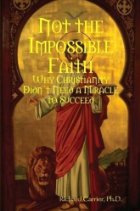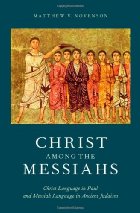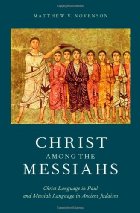*
Did Mark Invent Jesus of Nazareth?
.
COVERED IN THIS POST:
- How much did Mark invent in his Gospel?
- John’s dependency on the Synoptics
- John’s changes and innovations
- Lazarus and the Signs Source
- How independent of Mark are Matthew and Luke?
- Robert Price on no “M” and “L” sources
- Trusting Luke’s Prologue again
- Ehrman’s fantasy world of “many Gospels” before Mark
- Rehashing arguments which render an historical Jesus “fact”
- Postscript
.
* * * * *
Did Mark, Our First Gospel, Invent the Idea of a Historical Person, Jesus?
(Did Jesus Exist? pp. 259-263)
.
Mark building on Q traditions

In the final section of his critique of individual mythicists, Bart Ehrman addresses the question of whether Mark invented his Gospel character. Insofar as he has my specific position in mind, he doesn’t quite get it right, as usual.
It is widely thought among those who hold such [mythicist] views that the Jesus of the Gospel tradition—the Jewish teacher and prophet of Galilee who did miracles and then was crucified by the Romans—is an invention of our first Gospel, Mark. . . . This view is suggested in several places by Wells and is stated quite definitively by Doherty: “All the Gospels derive their basic story of Jesus of Nazareth from one source: the Gospel of Mark, the first one composed. Subsequent evangelists reworked Mark in their own interests and added new material.” (DJE? p. 259)
I do not say that “the Jewish teacher and prophet of Galilee who did miracles” is the invention of Mark, but rather of the Q community which preceded him, although that invention was not in the form of any narrative life story, but simply as the alleged originator of a bare collection of the community’s sayings and a few anecdotes, with no biography, let alone a personality, in view. Continue reading “30. Earl Doherty’s Response to Bart Ehrman’s Case Against Mythicism — Part 30 (Did Mark Invent Jesus of Nazareth?)”







